Scarcity Zero aims to deploy renewable energy in the most effective and scalable ways possible. While traditional wind and solar farms remain valuable, the most impactful approach is to embed renewable technologies directly into the infrastructure of our cities.
Cities across the nation offer vast sunlit surfaces ideal for solar panel installation. Modern photovoltaic panels are both affordable and adaptable, making them suitable for various urban applications:
Beyond rooftops, solar panels can be interwoven within the windows and siding of buildings, on the sides of bridges and overpasses, and within canopies over parking lots, highways, road medians and bike paths. Nearly every aspect of municipal infrastructure can today be seamlessly integrated with solar power.
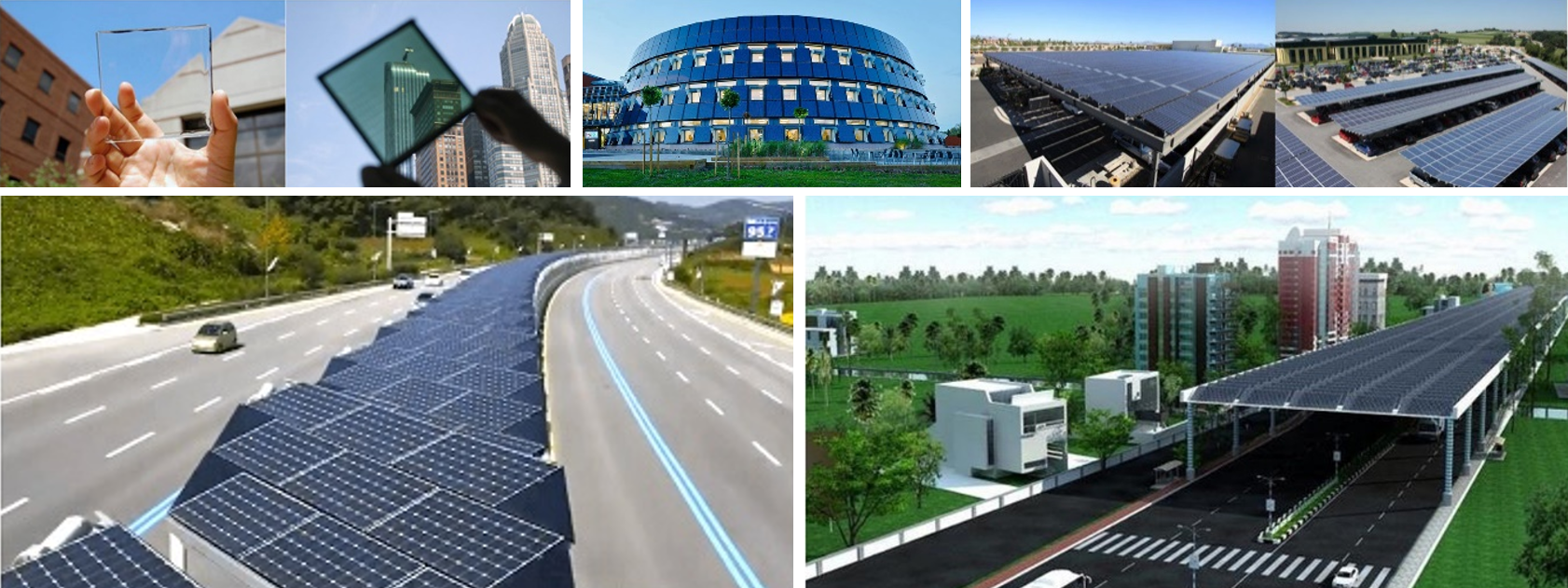
Top-left to bottom-right: 1). Clear photovoltaic glass. 2). Green photovoltaic glass. 3). Solar-sided building. 4) + 5). Solar canopies over parking lots. 6). Highway median converted to solar-canopied bike path. 7) Solar highway canopy.

Concept of comprehensive solar integration with municipal infrastructure.
Wind, too, can be similarly interwoven. As wind power has evolved from skyscraper-sized turbines that are hallmarks of traditional wind farms, small modular turbines can today be deployed alongside solar panels within the thousands of miles of highway medians surrounding America’s cities. While these smaller turbines are significantly less efficient than their larger counterparts, their ease of deployment and strength in numbers can collectively present a potent boost to passive power generation. As highway medians are flat, straight and municipally owned, they collectively present billions of additional square feet that are effectively free to deploy wind at scale – which in this context can be significantly boosted by air movement from passing vehicles.
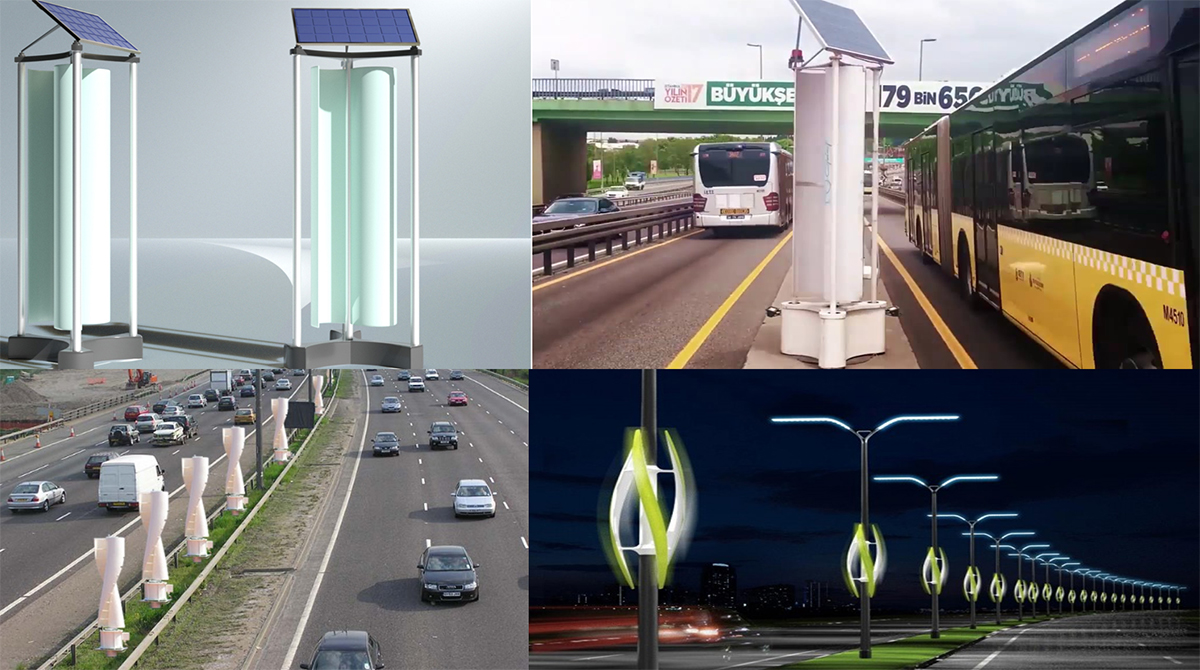
Modular, mass-produced wind turbines powered by vehicle traffic at the medians of highways.
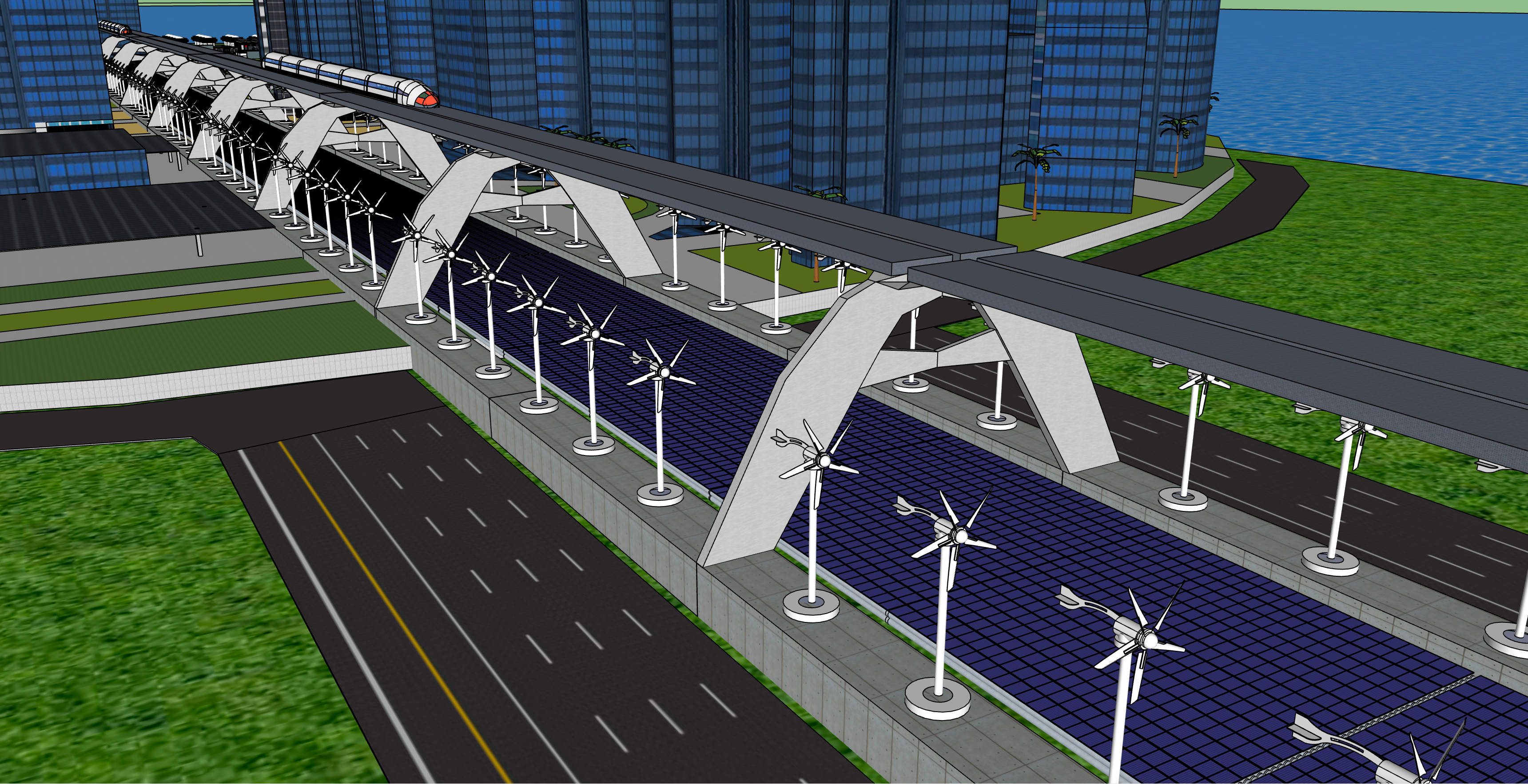
Concept of Renewable City monorail with modular wind turbines alongside National Aqueduct pipelines.
It is difficult to overstate the potential scale of energy generation made possible by this approach. That is not only because municipal infrastructure offers an unrivaled expanse of cost-free surface area and flexibility of location, but also because this approach solves many of the challenges facing large-scale renewable deployment today:
- Proximity Reduces Transmission Losses: Generating power close to where it's consumed minimizes energy loss over transmission lines and reduces infrastructure costs..
- Cost-Effective Land Use: Utilizing existing municipal spaces eliminates the need for expensive land purchases, especially in densely populated areas.
- Regulatory Efficiency: Municipal governments can more easily implement and manage renewable projects on public property.
- Enhanced Energy Reliability: Local renewable sources decrease dependence on external power grids, mitigating issues related to energy intermittency and grid failures
- Scalable Implementation: Cities can incrementally expand renewable installations, allowing for flexible growth aligned with technological advancements and energy demands.
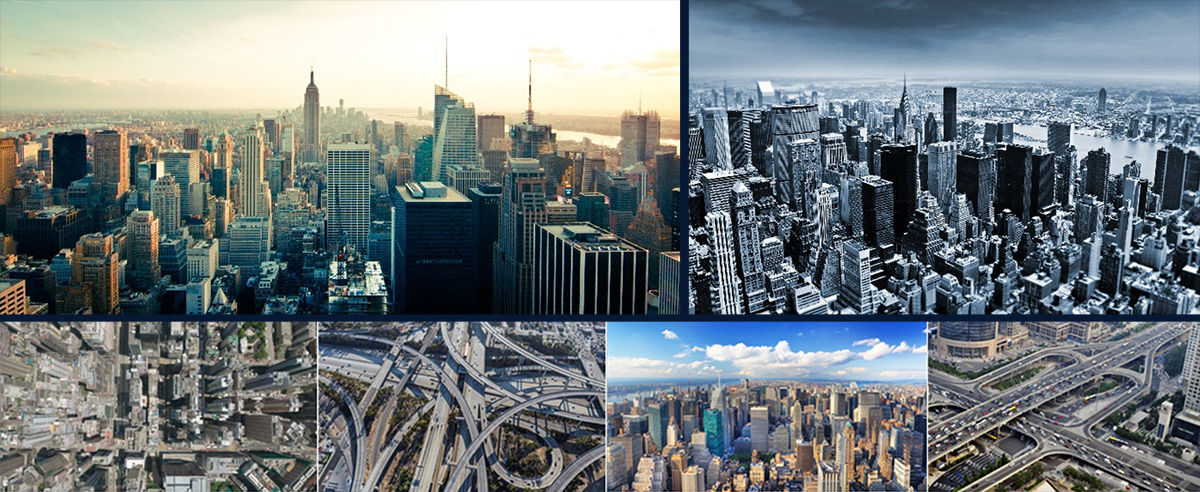
Expanses of American cities, reflecting only a fraction of national urban landscapes.
Beyond addressing these challenges, integrating renewables within municipal infrastructure turns each individual panel or turbine into a node that in aggregate helps underwrite a smart, reinforced electric grid. At maximum scale, every building, parking lot, highway median, bridge, overpass and all points in between become a means to both generate and transmit electricity – which, when interconnected, can upgrade and replace the antiquated electric grids that are today struggling to keep up with our ever-advancing society.
As of this writing, our national electric grid is comprised of 7,600+ decentralized power plants that are owned by 3,200+ competing utility companies that transmit electricity through 450,000+ miles of high voltage power lines, relay stations and transformers. This arbitrary deployment of infrastructure does not operate within a cohesive, dynamic and scalable framework, nor does it utilize cooperating systems that are mass-manufactured to a modular standard for rapid installation and replacement. This contributes to the problem of power shortages and regional blackouts, which are getting worse over time as our existing electric grids decay. The currently estimated cost to upgrade them using today’s technology exceeds $2 trillion. Integrating renewables within municipal infrastructure can effectively solve this problem at a far superior return on investment.
Further, the combination of these aforementioned factors accomplishes two important goals:
-
It transforms cities into power-generating centers. Once cities scale renewable integration to the point where they can generate more energy than they consume, they functionally become power plants. With the ability to store energy generated by renewables within The National Aqueduct, cities can thereafter contribute to a national energy abundance instead of drawing from external power infrastructure to meet their energy needs.
For example: Miami-Dade County in South Florida spans an area of 2,431 square miles, 1,898 of which is land. It assessed a net energy consumption of 132.13 billion kilowatt-hours in 2018. Using rationale explained in the following citation, we assess that one square mile of solar panel surface can reliably generate 836.5 million kilowatt-hours of energy per-year. That means Miami-Dade County would only have to integrate solar panels within 159 square miles of its land area – less than 8% – to become energy independent, assuming that The National Aqueduct could provide sufficient power off-hours. At 10% integration, the county generates more energy than it consumes. At 15%, it’s a power plant, one with multiplied output should integration reach beyond that – all the more so as the efficiency of renewables improves over time.
-
It drastically increases power generation capacity. With cities powered by integrated renewables and the energy they help contribute to The National Aqueduct, any external power generation capacity thereafter enters a dynamic with drastically reduced demand. As additional power infrastructure is deployed, it increases generating capacity accordingly – at scale powering a multiplier effect where generating capacity continues to accelerate at a significantly faster rate. As the cost of energy is relational to demand, these circumstances cause the price of electricity to sharply reduce. This presents significant benefits across nearly all sectors of our economy, while also making dedicated resource production, environmental cleanup and carbon capture far less expensive.
This is where Cogeneration Facilities – Scarcity Zero’s second core function – enter the framework. As a cooperative deployment of modular, mass-produced systems that can be rapidly installed (or replaced), their intent is to eclipse our current generating capacity several times over while also powering systems that produce vital resources, extract greenhouse gasses, and recycle waste – all while providing a carbon-neutral energy source to mass-manufacture renewables.
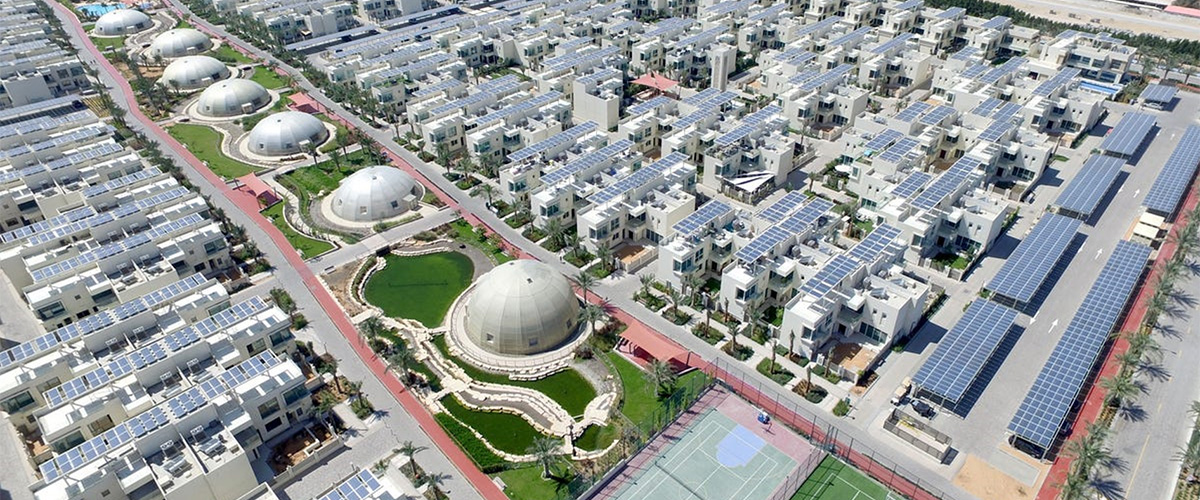
Solar City in Dubai
